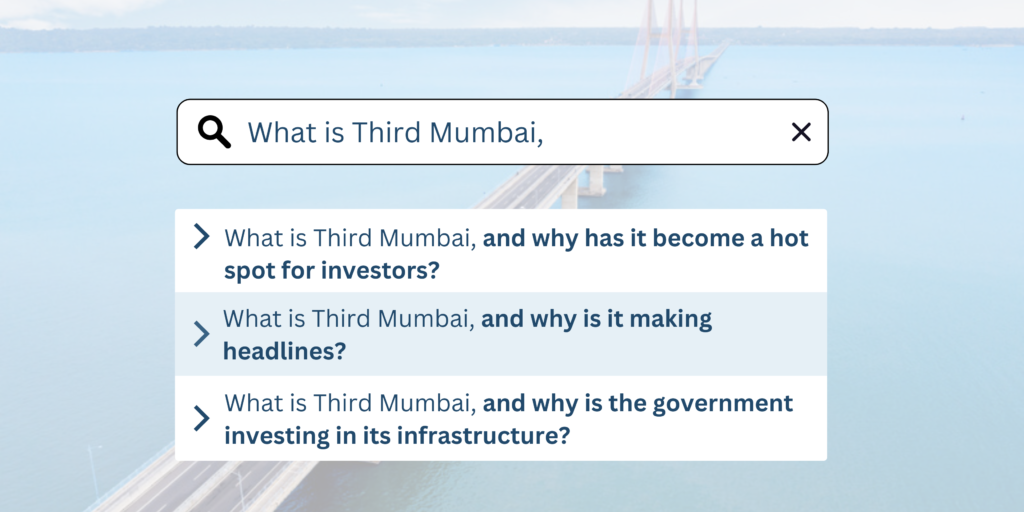Third Mumbai: KSC New Town, A Hub of Infrastructure Development with Strategic Connectivity to Navi Mumbai International Airport, Atal Setu, Local Railways, and Major Highways for lucrative Investment Opportunities
The Karnala-Sai-Chirner Town (KSC Town), often referred to as “Third Mumbai,” has been envisioned as a major economic hub within the Mumbai Metropolitan Region (MMR). According to NITI Aayog’s masterplan, KSC Town is projected to boost MMR’s Gross Domestic Product (GDP) to USD 300 billion over the next five years. To support this ambitious growth, the Mumbai Metropolitan Region Development Authority (MMRDA) and the World Economic Forum (WEF) signed a Memorandum of Understanding (MoU) in September 2024. The primary goal of this collaboration is to establish technology hubs in the region and position MMR to host 65% of India’s data centers.
In December 2024, MMRDA issued a tender to hire a consultant for conducting various surveys, including LIDAR, aerial, and land surveys, scheduled to take place in 2025. These surveys are expected to play a crucial role in the region’s infrastructure development.
In a significant step forward, MMRDA signed MoUs with 11 global and domestic companies during a meeting in Davos last month, securing investments totaling USD 40 billion (approximately INR 3.5 lakh crore) for the MMR, which includes the KSC Town project. An official emphasized that these MoUs are structured to span a long-term period of five to seven years, which will be vital for the sustained growth and development of MMR and the realization of Third Mumbai.
The foreign companies involved in these MoUs include prominent global players such as Brookfield, Blackstone Inc., Temasek Holdings, Sumitomo Realty & Development, The Everstone Group, University of Birmingham, Sotefin, Circular Economy Park Development, and the Department of Transport UK & Crossrail International. In addition, domestic investors include well-known Mumbai-based companies like the Hiranandani Group and K Raheja Corp, both of which have significant business interests and investments in the MMR. These strategic partnerships are expected to lay the foundation for the future transformation of the region.
Third Mumbai is envisioned as a significant urban development project aimed at easing congestion in the existing Mumbai metropolitan area while providing modern amenities and infrastructure to accommodate a growing population.
Connectivity Features
- Navi Mumbai International Airport:
- Navi Mumbai International Airport has successfully completed its first trial aircraft takeoff and landing, with full operations expected to commence by March 2025. The project will be carried out in five phases, with Phases 1 and 2 concentrating on the initial launch with one runway. This phased strategy is designed to facilitate a smooth rollout and effectively accommodate the anticipated increase in air traffic.
- Atal Setu:
- Prime Minister Narendra Modi inaugurated the Mumbai Trans Harbour Link (MTHL), Atal Setu, India’s longest sea bridge, which will reduce the travel time between South Mumbai CST to Third Mumbai from two hours to 25 minutes.
- Local Railway Stations:
- On January 12, 2024, Prime Minister Narendra Modi marked a significant milestone by inaugurating the first suburban train from Uran. At a well-attended event in Ulwe, Navi Mumbai, he officially launched the 14.60- kilometer Kharkopar- Uran stretch, a vital part of the 27-kilometer Belapur- Seawoods- Ranjanpada- Dronagiri- Uran suburban corridor
- Reliance Economic Hub:
- Reliance Industries Limited (RIL) is poised to develop a global economic hub in Navi Mumbai, having secured sub-leases on around 3,750 acres of land for ₹13,400 crore. RIL aims to establish an integrated digital services industrial region of the highest quality through international partnerships.
Future Prospects
Economic Growth:
The development is expected to attract significant investment, fostering economic growth and increasing property values over time.Third Mumbai’s focus on comprehensive development and enhanced connectivity positions it as a promising destination for both residential living and investment opportunities. With its strategic infrastructure, the area is set to become a vital part of the Mumbai Metropolitan Region








